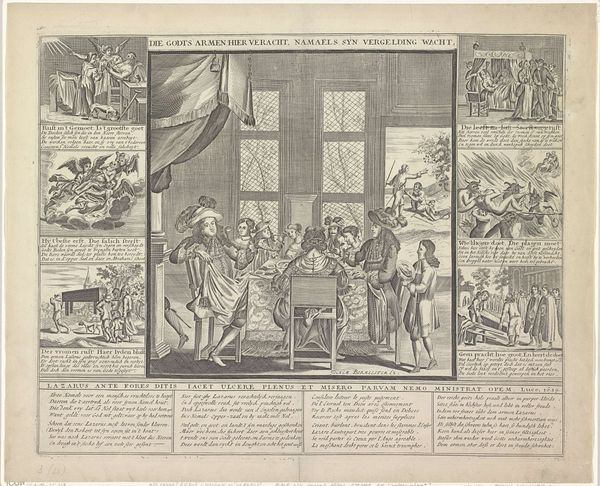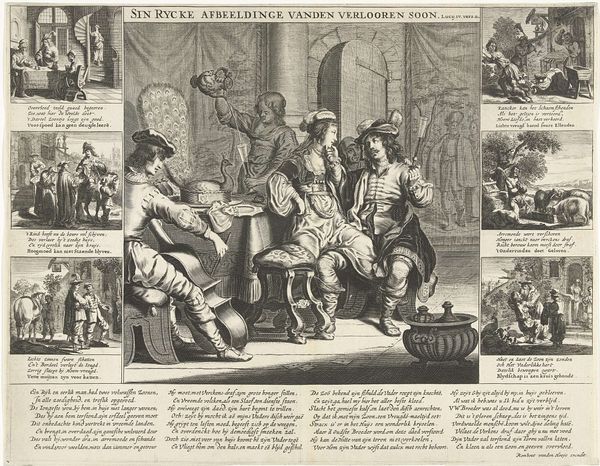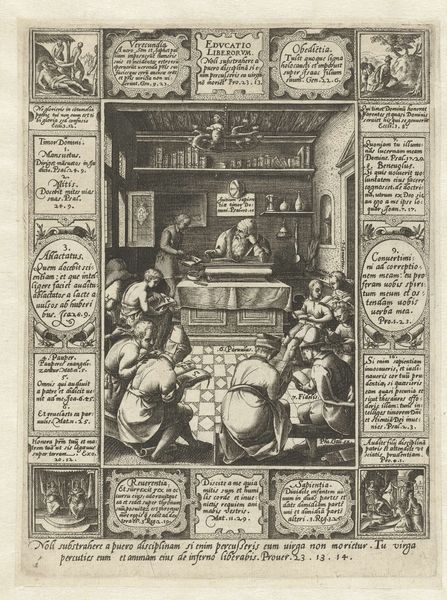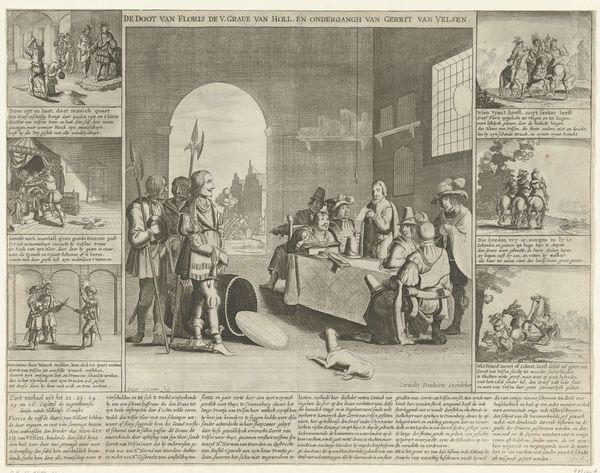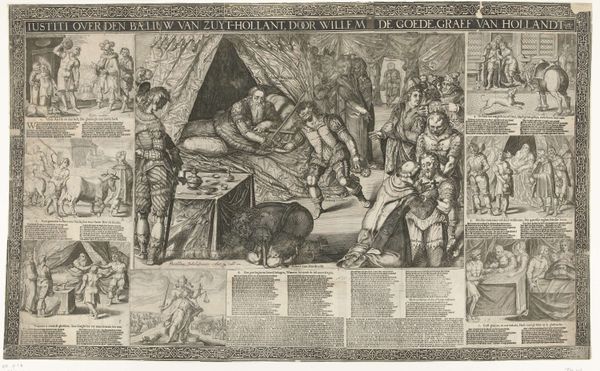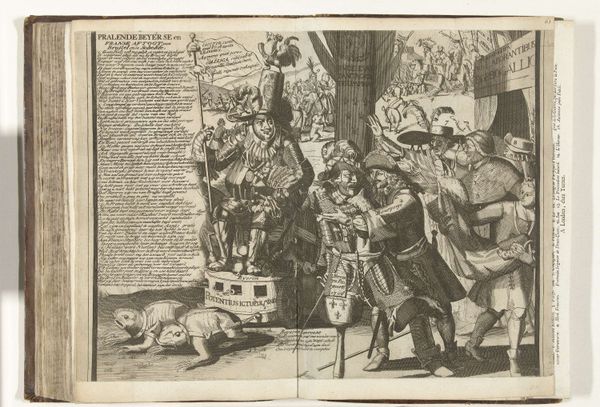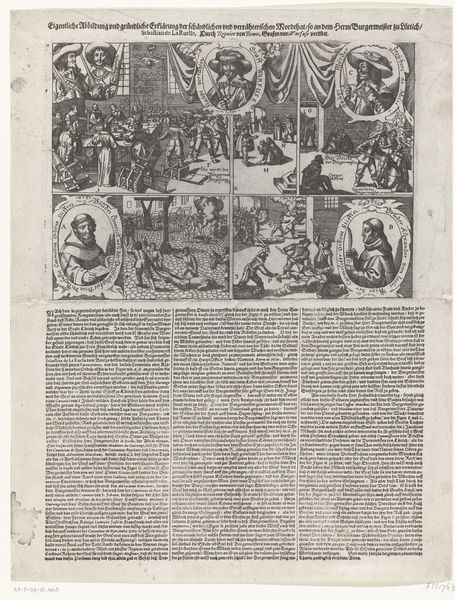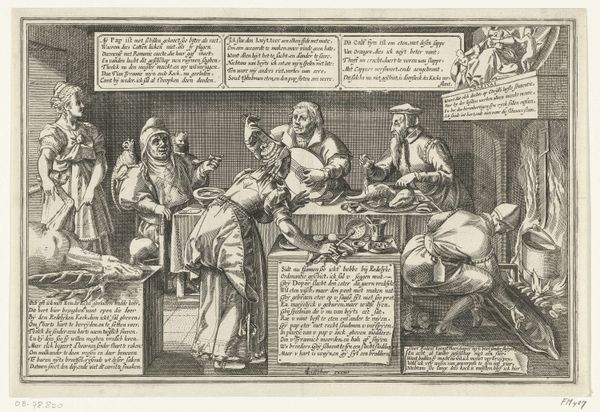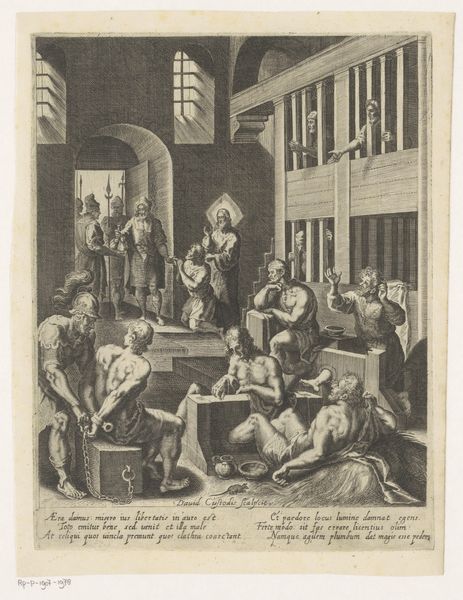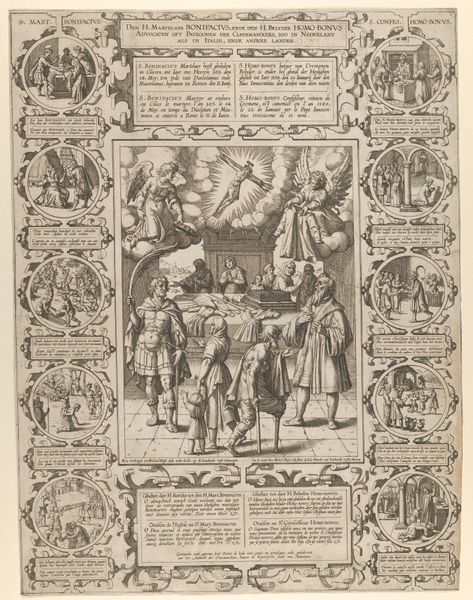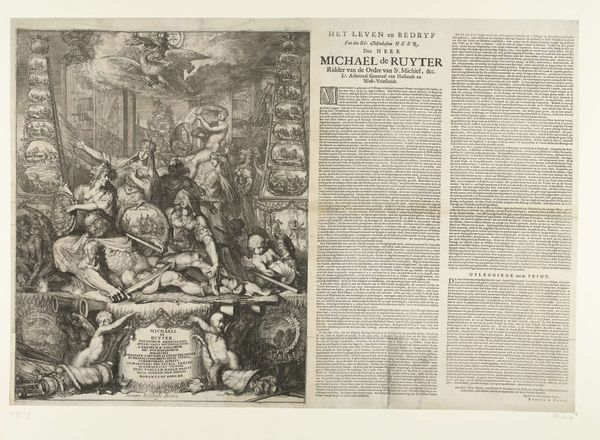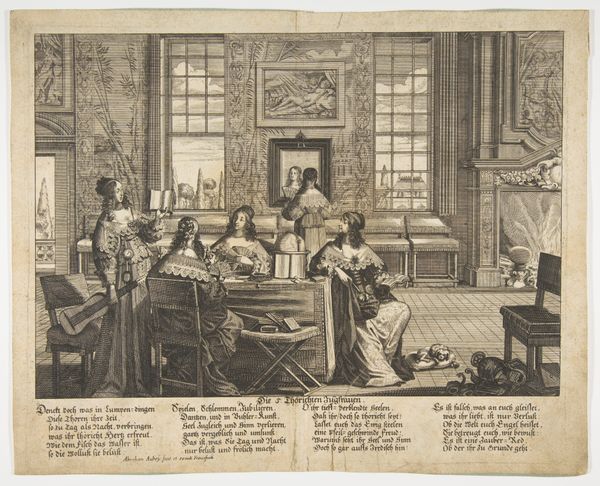
print, etching, engraving
#
narrative-art
#
baroque
# print
#
etching
#
line
#
history-painting
#
engraving
Dimensions: height 402 mm, width 199 mm
Copyright: Rijks Museum: Open Domain
Curator: Welcome. Before us is an engraving entitled "Lazarus en de rijke man," dating, rather broadly, from 1645 to 1706, held at the Rijksmuseum. The piece is credited to an anonymous artist. Editor: My immediate impression is of overwhelming complexity. The dense composition, crammed with figures and text, feels almost claustrophobic, reflecting, perhaps, a worldview saturated with moral judgment. Curator: Indeed. Focusing on the visual architecture, notice the strategic use of line work to define forms and textures. The artist has organized the narrative into distinct panels around the central scene of the rich man’s table, creating a structured juxtaposition between earthly indulgence and divine retribution. Semiotically, the contrast is stark: clear symbols are positioned against one another, allowing us to grasp the theme with clarity. Editor: For me, this composition speaks directly to its likely function and dissemination. It’s a print, and its crowded design and inserted text point toward a readily reproducible medium meant to disseminate its moral lesson widely. I’m interested in the conditions of production – how would it have been created and what level of skill and access was required? These considerations help to decode its function as both image and object. Curator: Good point, seeing as each distinct visual section and inscription function almost as separate units which, in this case, serve to augment the overriding, cautionary theme present within the overall print. The choice of scene, with the rich man feasting oblivious to Lazarus at his gate, prefigures a divine reckoning and reinforces societal power structures as well as faith and morality, doesn't it? Editor: Yes, it emphasizes that tension—between conspicuous consumption and the material realities of poverty and mortality. And while we can interpret the scene's narrative and symbolism, thinking of its method and production reminds us how widely its didactic message could be circulated to shape attitudes to the distribution of wealth and responsibility within the contemporary moment. Curator: It’s interesting to see how a study of structure illuminates not just a static artwork, but it’s historical position. I’ve found your observations today revealing as we tease apart these considerations of artistry. Editor: It’s always important to remember that artworks don’t just signify—they're made. Paying attention to that shifts how we comprehend what we see before us.
Comments
No comments
Be the first to comment and join the conversation on the ultimate creative platform.
